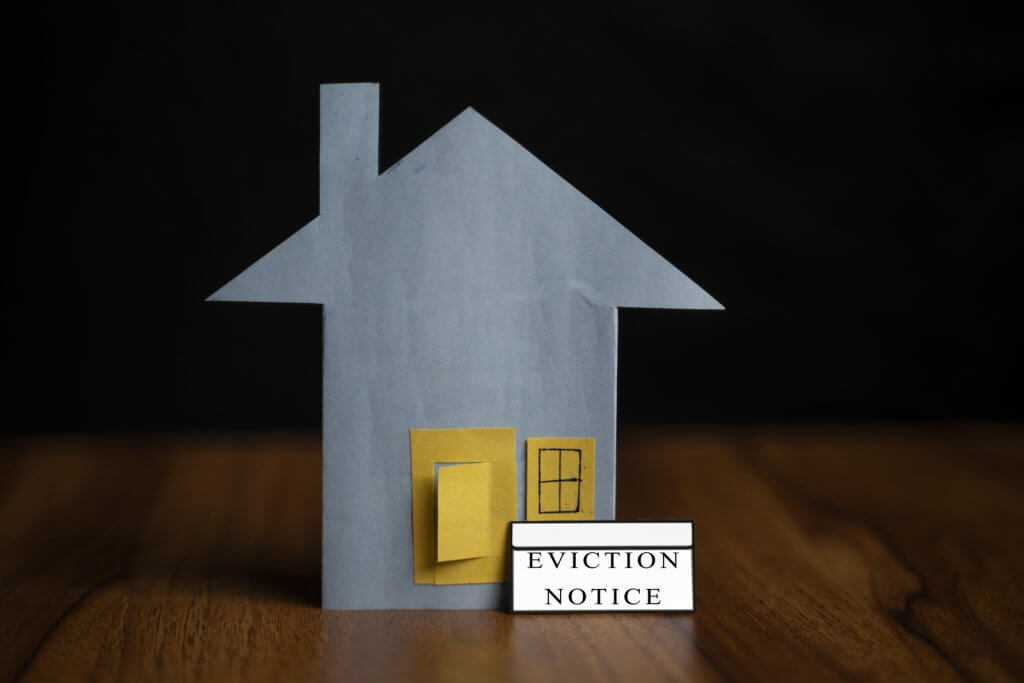
Introduction
A Section 8 notice is used to serve notice of the intent to seek possession of a property as a tenant has breached the terms of their tenancy. A Section 8 notice is often termed the fault based possession notice and can be used for both Assured and Assured Shorthold Tenancy (AST) agreements. If the landlord wants to gain possession of the property at the end of the tenancy agreement, a Section 21 notice should be served rather than a Section 8.
When is a Section 8 notice used?
A Section 8 notice is traditionally used to evict a tenant in breech of their tenancy agreement and as such, is referred to as a fault based way of evicting a tenant. The most common breach of a tenancy is non-payment of rent. The landlord or managing agent will be required to show evidence of the breach of the tenancy to a County Court Judge.
Timings and expiry of Section 8 notices
Depending whether the tenancy is a monthly or a weekly tenancy the notice will expire 2 weeks (weekly tenancy) or 2 months (monthly tenancy) after it was issued. Specifically, if the landlord is relying on ground 2, two months notice must be given, however, if the landlord is relying on grounds 8, 10, 11, 12, 13, 14, 14A, 15 or 17, they must give the
tenant two weeks notice before commencing court proceedings.
Once the tenant receives the Section 8 notice, they have a maximum of 14 days to respond. Once the Section 8 notice has expired and the tenant has not remedied the breach of the tenancy – if that is possible – possession proceedings can be initiated.
Possession proceedings can be initiated as soon as the notice expires. If the tenant does not leave after the court has issued the tenant with a notice to leave, the landlord can ask County court Bailiffs to evict the tenant.
Grounds for possession
There are 17 Grounds for Possession that can be used on the Section 8 Notice. These 17 grounds can be split into 2 broad sections:
Grounds 1 to 8 – Mandatory Grounds on which the Court MUST order Possession. If one of the first 8 grounds are used, the Court must order possession if the documents are served correctly.
Grounds 9 to 17 – Discretionary Grounds on which the Court MAY order Possession. If only grounds 9 to 17 are used the Judge at the County Court can choose whether to order possession.
The wording of each of the 17 grounds are detailed in Schedule 2 of the Housing Act
1988 – see the link in the appendix.
The Grounds can be categorised into more practical themes:
Non-payment of rent
Ground 8 is used but grounds 10 and 11 can be used were applicable. Ground 8 is a mandatory ground which if proven must be enforced by a judge. Grounds 10 and 11 are discretionary grounds.
Other tenancy breaches
Grounds 12, 13, 14 and 15 are discretionary grounds. These four grounds deal with misconduct and breaches of the tenancy by the tenant.
Prior notice grounds
Grounds 1, 2, 3, 4 and 5 are mandatory grounds which require the landlord or letting agent to have served a notice to the tenant relating to the ground, on or before the granting of the tenancy. A tenant should check their documentation, especially their tenancy, to check this information has been provided.
Other grounds
Other grounds are the remainder of the grounds which are not easy to classify. Grounds 6, 7, 9, 16 and 17 are other grounds which can be used to evict a tenant. Grounds 6 and 7 are mandatory grounds and 9, 16 and 17 discretionary grounds.
Summary
A Section 8 notice is usually issued if a tenant has breached the terms of their tenancy agreement, but may be issued for other reasons if the landlord needs to regain possession of their property. A section 8 notice must be issued in a prescribed way and possession can only be granted by a County Court Judge; there are mandatory grounds on which a judge MUST grant possession and discretionary grounds on which a Judge MAY grant
possession.
Useful Links:
Schedule 2 of the Housing Act 1988.
http://www.opsi.gov.uk/acts/acts1988/ukpga_19880050_en_14#sch2



